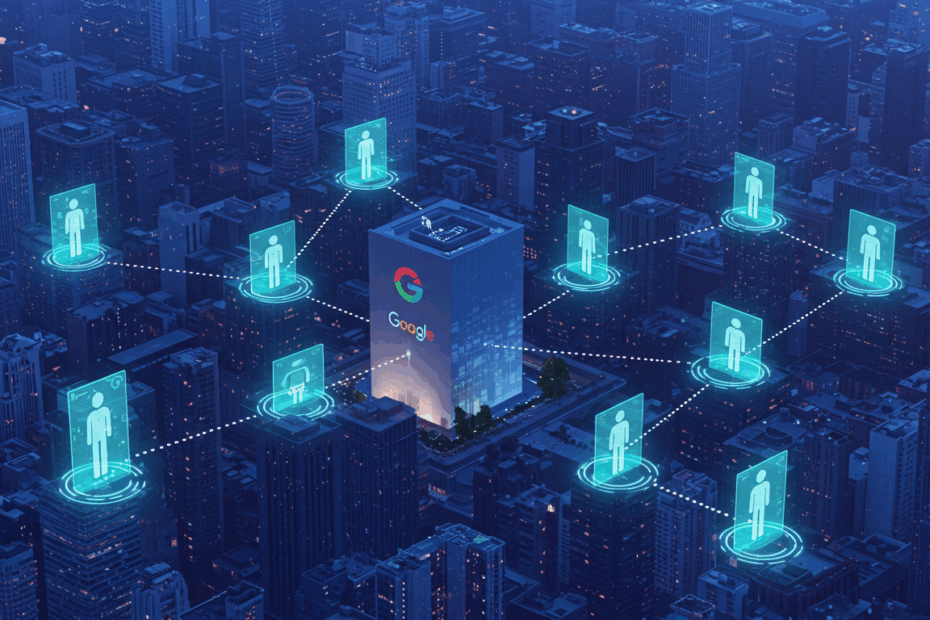Unlocking the Future: A Deep Dive into Google’s Vision for AI Agents and Generative AI
John: Good morning, Lila. Today, we’re tackling a topic that’s rapidly moving from the research lab to real-world applications: AI Agents. For years, we’ve talked about AI in a more passive sense—models that can classify an image or translate text. But we’re now entering the era of *agentic AI*, where these systems don’t just process information, they take action. It’s arguably the most significant shift in computing since the mobile revolution, and Google is positioning itself right at the epicenter of this change.
Lila: That’s a big claim, John! When I hear “AI Agent,” my mind still jumps to science fiction. For our readers who are new to this, could you break down what an AI Agent actually is, in simple terms? Is it just a fancier chatbot?
John: That’s the perfect question, and the distinction is crucial. A chatbot, even a very advanced one powered by Generative AI (AI that can create new content, like text or images), operates in a conversational loop. You ask, it answers. An AI Agent, on the other hand, is given a *goal*. It then autonomously plans the steps needed to achieve that goal, selects the right tools for each step, executes them, and even adapts its plan based on the results. Think of it less like a conversation partner and more like a diligent, autonomous digital employee.
Lila: Okay, so it’s the difference between asking a librarian for a book title versus telling them, “Please research the economic impact of renewable energy in Germany and write a five-page summary with charts by tomorrow.” The librarian—the agent—would then go off, find books, search databases, use a spreadsheet program, and deliver the final report.
John: Precisely. And the “brain” that allows the agent to understand your complex request, reason about the steps, and generate that summary is the Generative AI model. In Google’s case, this is often powered by their flagship model, Gemini. The agent architecture is the framework that allows that brain to connect to its “hands and feet”—the digital tools like web browsers, APIs (Application Programming Interfaces, which let programs talk to each other), and internal company databases.

So, Where Do You Get These AI Agents?
Lila: That makes sense. It’s not just the AI model, but the whole system around it. If I’m a developer or a business owner excited by this, where do I even start? Is this something you can just download?
John: Not in the way you download an app, but Google has been aggressively building and releasing a suite of tools to make building these agents more accessible. The ecosystem largely lives within Google Cloud, their massive cloud computing platform. The central hub for AI development there is called **Vertex AI**. But for developers wanting to get their hands dirty, the most exciting recent release is probably the **Google Agent Development Kit (ADK)**.
Lila: Agent Development Kit… that sounds like a box of Lego for building AI. What’s inside?
John: That’s an excellent analogy. The ADK is an open-source library for the Python programming language that provides the foundational blocks for creating agents. Instead of having to write code from scratch for basic functions like memory (so the agent remembers past interactions), planning (breaking down a goal), and tool selection, the ADK provides pre-built components. It streamlines the entire process, letting developers focus on the unique logic of their specific agent, rather than reinventing the wheel. The InfoWorld articles we’ve seen highlight that this is a key step in moving agent creation from a niche, expert-driven field to something more mainstream developers can tackle.
The Technical Mechanism: How Do Agents Actually Work and Collaborate?
Lila: Okay, so a developer can use the ADK to build one of these agents. But you mentioned a future with *teams* of agents. How do they work together? If my “research agent” needs sales data, how does it talk to the “database agent” without causing chaos?
John: You’ve hit on the next frontier of this technology: multi-agent systems. A single, monolithic agent that tries to do everything is often inefficient. The more effective approach is to have smaller, specialized agents that are experts at one thing—one for web searches, one for database queries, one for scheduling meetings. The challenge, as you said, is making them communicate. This is where Google’s vision becomes particularly clear with their proposed **Agent-to-Agent (A2A) Communication Protocol**.
Lila: A2A… another acronym! Is that like a special language for AIs?
John: Essentially, yes. Think of it as a universal standard for business communication, but for AIs. Right now, if two companies want their software to interact, their engineers have to build a custom integration. The A2A protocol aims to be a standardized format—a set of rules and a shared vocabulary—that any agent can use to send requests, receive data, and understand the capabilities of other agents, regardless of who built them or what specific AI model they use. It’s the groundwork for a true economy of agents.
Lila: Wow, so it’s like creating the TCP/IP (the fundamental protocol of the internet) for AI collaboration. One agent could discover another agent on the network, ask what it does, and then task it with something, all without human intervention?
John: Exactly. And to manage all of this, especially within a large company, Google offers the **Vertex AI Agent Engine**. This is the enterprise-grade platform that handles the deployment, scaling, and security of these agent systems. It’s the “office building” where all these digital employees work. To address the security concerns of agents accessing sensitive information, they’ve also released tools like the **MCP (Multi-Cloud-Private) Toolbox for Databases**. This acts as a secure gateway, ensuring agents can query databases safely and efficiently without exposing the underlying data or credentials.
Lila: So, to use my earlier analogy: Google is providing the agent’s brain (Gemini), the Lego kit to build its body (ADK), a universal language to talk to others (A2A), the secure office building to work in (Vertex AI Agent Engine), and the special keycard to access the file room (MCP Toolbox). That’s incredibly comprehensive.
John: It is. They are building out every layer of the stack, from the foundational models to the developer tools to the enterprise infrastructure. It’s a very deliberate, long-term strategy to create a complete, interconnected ecosystem for agentic AI.

The Team and Community Behind the Curtain
Lila: Who are the masterminds behind all of this? Is this all coming out of one secretive lab at Google?
John: The work is spread across the company, but the two main drivers are **Google DeepMind**, their flagship AI research lab, and **Google Cloud**, their enterprise-facing division. DeepMind often pioneers the fundamental research—the new model architectures and agentic concepts. Google Cloud then focuses on productizing that research, making it secure, scalable, and useful for businesses. What’s notable, however, is that it’s not a closed-off effort. By open-sourcing critical pieces like the ADK, the MCP Toolbox, and other libraries like **GenAI Processors**, they are actively inviting the global developer community to participate.
Lila: Why would they give away key parts of their technology for free?
John: It’s a classic platform strategy. By making it easy and free for developers to start building with your tools, you create a vibrant ecosystem. Developers build new agents, contribute improvements back to the open-source projects, and publish tutorials. This accelerates innovation far beyond what Google’s internal teams could do alone. Furthermore, when these developers or their companies need to run their agents at scale, the natural place to go is the platform they’re already familiar with—Google Cloud. It builds a community and a business funnel simultaneously. We see this with third-party frameworks like LlamaIndex, which provide documentation on how to use their data-access tools specifically with Google’s Gemini models.
Use-Cases and a Glimpse into the Future
Lila: This all sounds powerful from a technical standpoint, but let’s make it tangible. What can these Google-powered agents do *today*, and what will they be doing for us in five years?
John: The use-cases are already emerging and they’re quite practical. A great example highlighted in the news is how **Box**, the cloud content management company, is using Google’s models and agent protocols. Their “Enhanced Extract Agent” can automatically pull structured information—like invoice numbers, dates, and totals—from unstructured documents like PDFs or images. This saves countless hours of manual data entry.
Lila: So it’s like a super-powered data clerk. What else?
John: In supply chain, we’re seeing specialized agents like the **Pi Agent from Pluto7**, which is purpose-built for decision intelligence and planning. In cybersecurity, Google’s own AI agent, codenamed “Big Sleep,” recently discovered a critical security flaw in SQLite, a database program used in billions of devices. It did this by intelligently testing the code in ways humans hadn’t thought of. For developers, the new **Gemini CLI (Command-Line Interface)** brings the power of Gemini directly into their coding terminal, helping them debug code or generate scripts on the fly.
Lila: And looking ahead? What’s the five-year vision?
John: The vision is a move towards true ambient computing. Instead of you opening ten different apps to plan a trip—a flight app, a hotel app, a rental car app, a calendar—you would simply state your goal to a master “personal agent.” You’d say, “Book a trip to the AI conference in San Francisco for me next month, find a hotel near the venue, book a flight arriving the day before, and add it all to my calendar.” That agent would then orchestrate a team of specialized agents to execute each part of the task. It will fundamentally change our relationship with technology, from us serving the applications to the applications serving our goals.

How Does Google’s Approach Compare to Competitors?
Lila: Google is a giant, but they’re not the only player in this game. How does their strategy compare to what we’re seeing from Microsoft, AWS, or even OpenAI directly?
John: It’s a fascinating and crowded field. **Microsoft** has an incredibly strong position through its deep partnership with **OpenAI**. They are integrating OpenAI’s models, like GPT-4, into their entire product suite via Microsoft Copilot and offering powerful agent-building capabilities on their Azure cloud platform. **AWS (Amazon Web Services)**, the cloud market leader, has its own AI platform called Bedrock, which gives customers a choice of models and a set of tools for building agents. Then you have innovative startups like **Cognition Labs**, which made waves with Devin, an agent focused on autonomous software engineering.
Lila: With so much competition, what makes Google’s approach unique?
John: While everyone is building tools to create agents, Google’s emphasis on the **Agent-to-Agent (A2A) protocol** is a key differentiator. They aren’t just trying to help you build a better agent; they’re trying to build the universal communication grid that all agents will eventually use to interact. It’s a bold, infrastructure-level play. If they succeed in making A2A the industry standard, then a huge portion of the future agent economy would, in some way, run on Google’s “rails.” Their other strength is the tight integration of their own state-of-the-art Gemini models with their cloud infrastructure and developer tools, creating a very smooth end-to-end experience.
Navigating the Risks and Cautions
Lila: This all sounds almost utopian, but with this much autonomous power, there must be significant risks. What are the things keeping security experts and ethicists up at night?
John: The concerns are very real, and it’s important to address them head-on.
- Security: The most obvious risk. If an agent is compromised, it could have authorized access to delete databases, spend company money, or leak sensitive customer data. This is why security-focused tools like the MCP Toolbox are not just features, but necessities.
- Reliability and Hallucination: Generative AI models can “hallucinate” or make things up. An agent acting on false information could lead to serious consequences. Imagine an agent hallucinating a login URL for a bank, as reported by CSO Online, and sending user credentials to a phishing site.
- Control and Predictability: How do you debug a team of autonomous agents that are making their own decisions? Preventing them from getting into infinite loops or working at cross-purposes is a massive engineering challenge. The cautionary tales about “vibe coding” from writers like Andrew Oliver show that simply telling an AI what you want doesn’t always yield a robust or safe result.
- Job Transformation: And of course, there’s the societal impact. While many tasks these agents will automate are tedious, the scale of this automation will inevitably transform many jobs, requiring a significant shift in workforce skills towards managing, directing, and building these new digital colleagues.
Expert Opinions and Industry Analysis
Lila: So what’s the verdict from the wider tech community? Is this seen as the real deal or overhyped?
John: The consensus among industry analysts is that agentic AI is the definitive next step. The excitement is palpable, but it’s tempered with a healthy dose of realism. The reports from publications like InfoWorld and CRN show that while the foundational pieces are falling into place, we are still in the very early innings. The case study of Deutsche Telekom’s scaled agent platform is significant because it demonstrates that building this for a massive enterprise is a serious, multi-year architectural effort. The expert view is that we’ll see a gradual adoption curve: first in well-defined, high-value business processes, and then expanding outwards as the technology becomes more reliable and easier to control.
Latest News and What to Watch Next
Lila: This field moves so fast. Based on the most recent announcements, what’s the immediate future hold? What’s on Google’s roadmap?
John: The recent flurry of activity in July 2025 gives us a clear picture. The open-sourcing of the **MCP Toolbox** and the **Gemini CLI**, along with continuous updates to the **Agent Development Kit (ADK)**, shows a clear focus on empowering developers. They want to get these tools into as many hands as possible. The partnerships with companies like Box and Teradata are social proof, showing that this isn’t just theoretical. Going forward, I expect to see three things:
- More pre-built, specialized agents for specific industries (e.g., a “Financial Analyst Agent” or a “Healthcare Scheduling Agent”).
- A major push for adoption of the A2A protocol, possibly by integrating it into popular open-source frameworks.
- Enhanced “guardrails” and monitoring tools within Vertex AI to make managing agent fleets safer and more transparent.
Frequently Asked Questions (FAQ)
Lila: Perfect. Let’s wrap up with a quick FAQ section for anyone who’s still getting up to speed.
John: Fire away.
Lila: 1. In one sentence, what is an AI Agent?
John: An AI Agent is a smart program that can understand a goal, create a plan, and use digital tools on its own to achieve that goal.
Lila: 2. How is an AI Agent different from ChatGPT?
John: ChatGPT is a conversational AI that responds to your prompts; an AI Agent takes your prompt as a long-term goal and then independently acts on it, using other applications and services to get the job done.
Lila: 3. Do I need to be an expert programmer to build an AI Agent?
John: Right now, a good understanding of programming, especially in Python, is very helpful. However, tools like Google’s ADK and other emerging low-code platforms are actively working to lower that barrier to entry.
Lila: 4. Is Google the only company to build these agent tools?
John: No, it’s a very competitive space. Microsoft with OpenAI, AWS, and many startups are all building powerful agentic platforms. Google’s approach is particularly notable for its comprehensive ecosystem and its focus on agent-to-agent communication standards.
Related Links and Further Reading
Lila: This has been incredibly insightful, John. Where can our readers go to learn more and see these tools for themselves?
John: The best place to start is always the source. We recommend checking out these official resources and news articles:
- Overview of Vertex AI Agent Engine
- Get Started with Google’s Agent Development Kit (ADK)
- Announcing GenAI Processors
- In-depth Guide to Google’s Agent-to-Agent (A2A) SDK
- Google AI for Developers
John: The development of agentic AI is a marathon, not a sprint. We’re witnessing the construction of a new technological foundation, and while the initial structure is impressive, the most exciting applications are likely ones we haven’t even conceived of yet.
Lila: It feels like we’re on the cusp of something truly transformative. It’s an exciting time to be watching this space. Thanks for breaking it all down, John!
John: My pleasure, Lila. And for our readers, remember that the information presented here is for educational purposes. The world of AI technology is volatile and changes quickly. Always do your own research before making any decisions based on this fast-evolving landscape.
